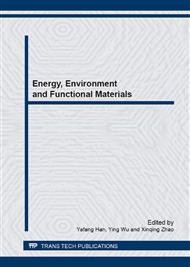p.378
p.383
p.387
p.395
p.401
p.407
p.412
p.419
p.425
Synthesis of Nanogels of Poly Methyacrylic Acid Using Methyl Cellulose as a Template
Abstract:
In recent decades, thermo sensitive polymer system has been intensively studied due to significant importance in fundamental studies and various applications. Methyl cellulose (MC) is a thermo sensitive natural polymer, having a phase transition temperature or a lower critical solution temperature of about 65 °C. When methacrylic acid (MAA) was added to the MC solution, the phase transition of MC occurred at a lower temperature less than 65°C, and a higher concentration of MAA leds to a lower phase transition temperature of MC. Based on the phase transition of MC solution triggered by MAA, the surfactant-free poly (methacrylic acid) nanogels were synthesized by using methyl cellulose as a template in an aqueous media. The resulting PMAA nanogels characterized by using dynamic light scattering (DLS) and Fourier Transform Infrared Spectroscopy (FTIR). The nanogels of poly methyacrylic acid (PMAA) were affected by the concentration of both MC and MAA. A higher concentration of MAA led to a higher polymerization rate, and the higher concentration of MC resulted in the formation of the samller size of PMAA nanogels.
Info:
Periodical:
Pages:
401-406
Citation:
Online since:
April 2014
Authors:
Keywords:
Price:
Сopyright:
© 2014 Trans Tech Publications Ltd. All Rights Reserved
Share:
Citation:


